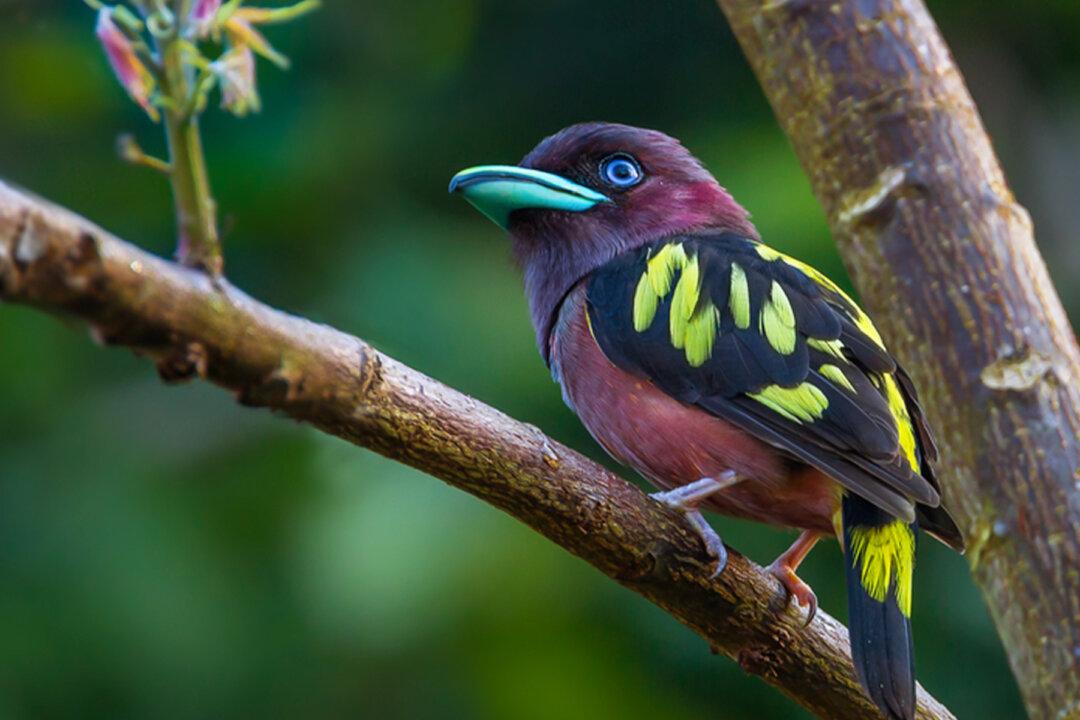Sometimes, nature supersedes our expectations for what a certain species is “supposed” to look like. The world of birds is a case in point, a veritable beauty pageant on any given day. However, the colorful banded broadbill takes sartorial flair to a whole new level.
This stunning little bird—scientific name Eurylaimus javanicus—could easily be mistaken for the Australian kookaburra, or “tree kingfisher,” with its rounded body and helmet-shaped head. But while the kookaburra has a brown-beige plumage with a splash of electric blue, the banded broadbill boasts a color palette beyond compare.





